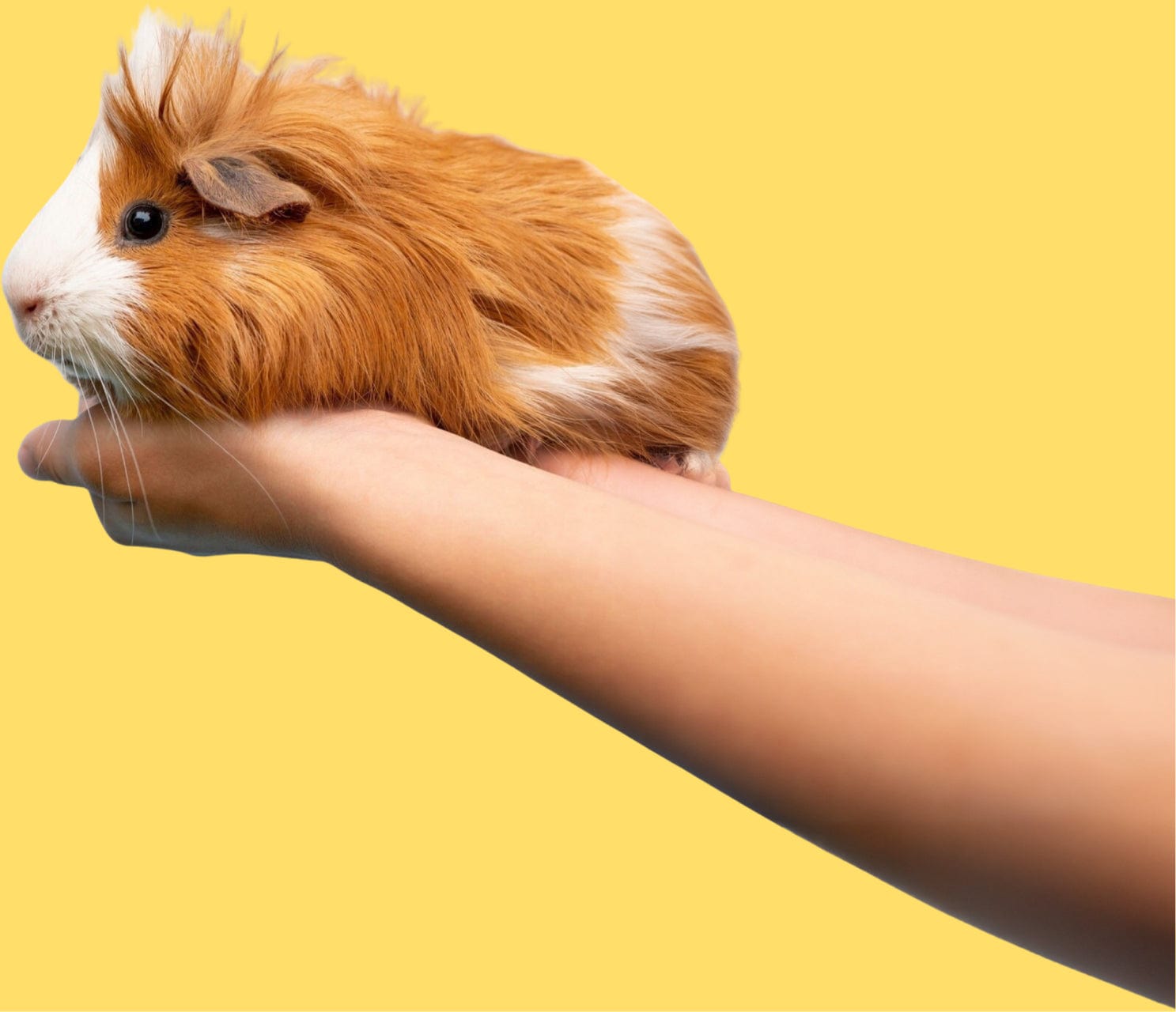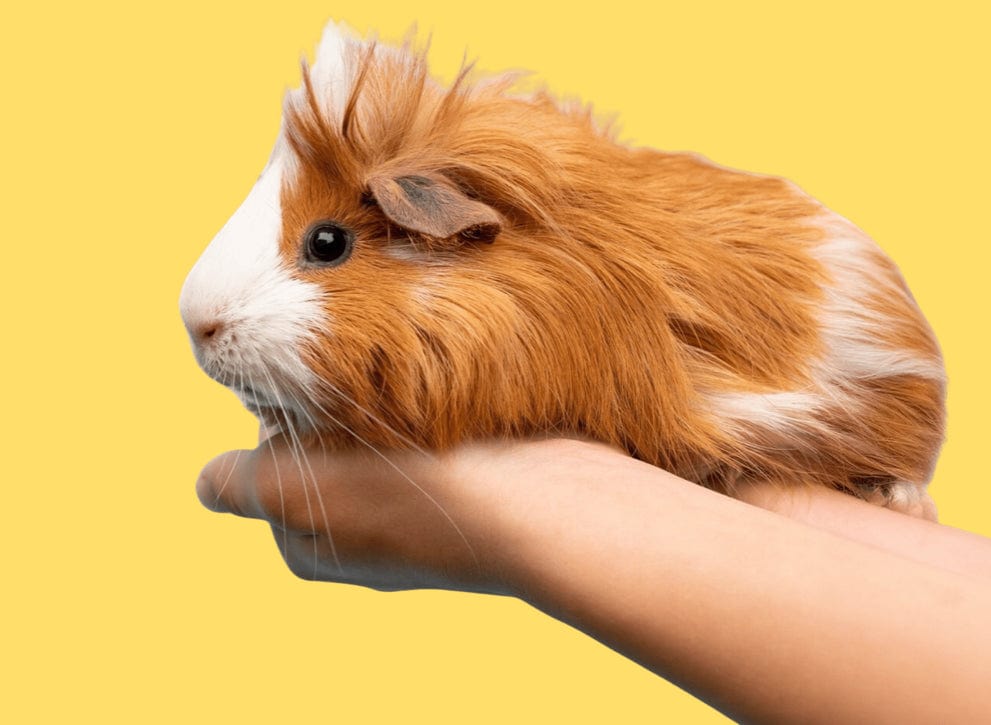Chinchillas are one of the less common small pets but boy are they gaining in popularity! Which brings up a lot of questions. Because you don’t want to bring one of these bundles of furry love into your home without knowing exactly what they need and exactly what you’re getting yourself into.
Love starts with curiosity! So let’s feed the curiosity so that you will be all set for your future with chinchillas.
Chinchilla 101:
The Chinchilla Resource
Chinchilla Lover's FAQ: Your Go-To Guide for chinchilla Care
Let's Talk Chinchillas!
How Much Does Having A Chinchilla Cost?
Let's start with the costs. When it comes to buying a chinchilla, always look into rescuing a chinchilla first. If that’s not an option then you should look at reputable breeders. Chinchillas from breeders usually cost between £80 and £200. But certain colours could be much more.
The real cost of a chinchilla comes from taking care of the chinchilla for their entire life! Potentially 10 or more years. So make sure you’re ready for the commitment. The upfront cost of gathering the needed supplies will be an additional few hundred pounds.
And a lot of the needed supplies will need to be refilled every month such as food, bedding, and chew toys. We will touch on supplies more later!
How long do chinchillas live?
Chinchillas live to be 8-10 years old in the wild. But domestic chinchillas can live up to 20 years! And the record for the oldest chinchilla is almost 30 years old.
There’s a lot that goes into how long a chinchilla lives. Some of which are out of your control. But the more you learn about how to properly care for your chinchilla the more you can do to keep them happy and healthy for many years.
How To Care For Your Chinchilla
Chinchillas need to be handled with care and patience. They aren’t always the best choice for young kids. They can be slow to warm up to people compared to other animals so you need to make sure you have the time to socialize your chinchilla.
Diet
In the wild, chinchillas eat grass, leaves, and twigs. As you can see they get a load of fibre! They spend their day searching and chewing on roughage giving their body the fibre it needs while wearing down their teeth.
Domestic chinchillas’ main source of food is hay. This will give their digestive system the fibre that it needs while giving them plants to chew and wear their teeth down. They need hay available 24/7 to prevent dental disease.
One mistake chinchilla parents often make is relying too much on pellets for their chinchilla. Pellet food doesn’t wear their teeth down the same way hay does. Pelletscan be a great supplement to their diet but a chinchilla shouldn’t have more than 1-2 Tablespoons of pellets a day.
Habitat
Your chinchilla needs a large enclosure and a safe space outside their enclosure to get even more exercise. Especially if their enclosure is on the smaller side!
Chinchillas love multi-level cages set up for jumping and climbing on ledges. The best cage setup for a chinchilla takes advantage of vertical space.
A good size enclosure for a single chinchilla is 4’ x 4’ x 3’. But when you have multiple chinchillas housed together they need even more space. So don’t underestimate how much space you will need for your chinchillas.
A chinchilla's enclosure is where they’ll spend the majority of their lives and it has a huge impact on their overall health and happiness. The bigger the better!
A playpen is great for giving your chin a safe place to stretch their legs outside of their cage.
Dust Baths
Chinchillas never take a bath in water. Their coats are so thick that they can’t dry out properly after getting wet. If too much moisture gets trapped on their skin they’re at risk of developing skin issues.
Chinchillas take dust baths! This helps absorb moisture and keep the oils on their skin evenly distributed. Make sure you are using dust or sand specifically mined and packaged for chinchillas.
The fine dust and sand can cause allergic reactions or issues with your chins respiratory system if it's not chosen and used correctly. Put the dust bath in the bottom of their cage or outside the cage with them multiple times a week for about an hour.
You don’t want the dust bath to be a permanent part of their space because again you want to limit the amount of time they are possibly breathing in the fine dust and you also don’t want your chin to start using the dust bath as a litter box. This dust bath needs to be a dry space!
When do Chinchillas Sleep?
Chinchillas are nocturnal which means they’re most active at night and in the evening. You will observe many naps during the day! But at least they won’t miss you too much while you’re at work!
Chinchillas typically sleep anywhere from 12 to 14 hours a day, but their sleep patterns can vary depending on factors such as age, environment, and individual personality. Providing a quiet and comfortable environment for your chinchilla to sleep in is essential for their health and well-being.
How Do You Know if A chinchilla Is Pregnant?
There are a couple of things to watch for if you suspect you have a pregnant chinchilla. If you weigh your chinchilla, you’ll see she’s gaining weight. You may notice her belly looking larger as well.
You can also notice the nipples getting larger and more pink or red than usual. This is a very good sign you have a pregnant chinchilla!
The gestation period for a chinchilla is between 110 to 115 days. A chinchilla will carry 2-4 kits at a time. A baby chinchilla is called a kit!
How To Identify Sex of a Chinchilla
The best way to tell if you have a female or male chinchilla is to check for a gap between the anus and penile (or uterine) cone. A male will have a large gap and a female won’t have one, their anus and uterine cone will be squished together.
What Do Chinchillas Need to thrive?
Enclosure/Playpen
Creating a safe space
Your chinchilla needs a large enclosure and a safe space outside their enclosure to get even more exercise. Especially if their enclosure is on the smaller side!
Chinchillas love multi-level cages set up for jumping and climbing on ledges. The best cage setup for a chinchilla takes advantage of vertical space.
A good size enclosure for a single chinchilla is 4’ x 4’ x 3’. But when you have multiple chinchillas housed together they need even more space. So don’t underestimate how much space you will need for your chinchillas.
A chinchilla's enclosure is where they’ll spend the majority of their lives and it has a huge impact on their overall health and happiness. The bigger the better!
A playpen is great for giving your chin a safe place to stretch their legs outside of their cage.
Bedding
Bedding helps keep your chinchilla’s space clean and dry. It gives your chin a soft place for their feet and they can cuddle into their bedding if they’re cold. It’s important that you provide them with quality low-dust natural bedding.
Aspen Shavings Bedding is a great choice!
Hammocks
A hammock gives your chinchilla a perfect space to get cosy and nap. It also gives their feet a break from the harder areas of the cage. Not all chinchillas are the same. Some might love a hammock and others might prefer sleeping somewhere else or in a hideout. So try out a few arrangements and get to know your chinchilla!
Hideouts
Even when you keep your house calm for your chinchilla, there will often be something that startles them. Having a hideout ensures they have a safe familiar place to retreat to when the day gets overstimulating.
Some chinchillas can’t get a proper nap without a hideout so this is a must-have for your chinchilla setup.
What do Chinchillas Eat?
In the wild, chinchillas eat grass, leaves, and twigs. As you can see they get a load of fibre! They spend their day searching and chewing on roughage giving their body the fibre it needs while wearing down their teeth.
Domestic chinchillas’ main source of food is hay. This will give their digestive system the fibre that it needs while giving them plants to chew and wear their teeth down. They need hay available 24/7 to prevent dental disease.
One mistake chinchilla parents often make is relying too much on pellets for their chinchilla. Pellet food doesn’t wear their teeth down the same way hay does. Pellets can be a great supplement to their diet but a chinchilla shouldn’t have more than 1-2 Tablespoons of pellets a day.
How to Keep a Chinchilla Clean
Chinchillas are nocturnal which means they’re most active at night and in the evening. You will observe many naps during the day! But at least they won’t miss you too much while you’re at work!
Chinchillas typically sleep anywhere from 12 to 14 hours a day, but their sleep patterns can vary depending on factors such as age, environment, and individual personality. Providing a quiet and comfortable environment for your chinchilla to sleep in is essential for their health and well-being.
How To keep your chinchilla entertained
There's nothing more important for your chinchilla's health and happiness than plenty of opportunty to explore and play! Chinchilla's are curious creatures so it's important to keep them mentally stimulated.
This means providing them with an enriching habitat and plenty of healthy toys to interact with on a daily basis. It's important to provide your chinchilla with only the safest, all-natural toys to ensure they provide activity that stimulates their natural instincts, but also toys that provide nutrients for them too!
Check out this list of the 10 Best Chinchilla Toys You Need Right Now.
How to Tame and play with a Chinchilla
When it comes to bonding with your chinchilla, go slow. Don’t try to grab them a lot the first day. Remember you don’t want to do anything that makes them feel uncomfortable because that will cause them to regress.
The first step to bonding with your chinchilla is to simply be around them. Put your hand in their cage. See if they want to come to you. Give them a goji berry to let them know that you want to be best friends!
When your chinchilla is comfortable with you and their environment they will be more likely to get curious and explore. And that’s what playing is all about. Give them plenty of toys and textures to explore and chew. And lots of space to move about.
What Are the different types of chinchillas?
IThere are two types of chinchillas: short-tailed and long-tailed. Domestic chinchillas, bred for companionship, differ from their wild counterparts. Short-tailed chinchillas are rarer due to past hunting for their thick fur, making them endangered. Long-tailed chinchillas are more common. Domestic chinchillas come in various colors.
-
White
-
Black
-
Brown
- Beige
-
Grey
-
Pink
-
Pink and White
- Purple
FUN FACTS ABOUT CHINCHILLAS?!
Where Do Chinchillas Come From
Short-haired chinchillas live higher up in the Andes mountains (South America) and long-haired chinchillas live lower. The chins living at the top need a bigger coat! They jump around rocky slopes which is why the domestic chinchillas love ledges in their cage.
Why Do They Have Suck Soft Furr?
Chinchillas have the softest fur of any land mammal. Their fur is incredibly dense, with around 60 hairs growing from a single follicle. This adaptation helps them stay warm in their high-altitude habitats.
How High Can Chinchillas Jump?
Chinchillas are excellent jumpers. They can leap up to 6 feet (1.8 meters) high and cover distances of over 10 feet (3 meters). Their powerful hind legs and long tails help them maintain balance while jumping.
Are Chinchillas Nocturnal?
Chinchillas are crepuscular, which means they are most active during dawn and dusk. In the wild, they retreat to their burrows during the day to avoid the high temperatures of their arid habitat.
Do Chinchillas Sweat?
Chinchillas lack sweat glands, which means they cannot regulate their body temperature through sweating like humans do. Instead, they rely on their large ears to dissipate heat and keep cool.
PSSST.... check out these videos to learn more about caring for chinchillas!
How are you feeling after reading this bit of information? We bet that your fears have been minimized. We at Small Pet Select provide our customers and potential customers with valuable information to guide them in their small pet endeavours. You will love it here!




